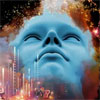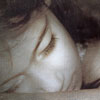The Psychic Side Of Dreams
 by Rosemary Ann Guiley
by Rosemary Ann Guiley
One night in August 2001, a man in Iowa has a terrifying nightmare. He dreams that a plane crashes into a tall building somewhere and many people die. The dream is so vivid and realistic that it seems like a real event. The next morning, he searches the news headlines, half expecting to see his dream played out. He is relieved there was no such tragedy, and it was “only a dream.”
The dream happens in real life, however—but not until September 11, 2001, when terrorists crash two jumbo passenger jets into the World Trade Center towers in New York City. The buildings collapse, and several thousand people die.
The man in Iowa previewed the disaster in a psychic dream. He had plenty of company; many others dreamed vivid details about 9/11 in advance. They dreamed about the World Trade Center, the plane that hit the Pentagon, and the plane that crashed near Shanksville, Pennsylvania. The dreams were filled with scenes that later took place: planes crashing into buildings, planes crashing on the ground, tall buildings collapsing, flames shooting out of buildings, people running covered in gray ash, and feelings of panic, mass death, and war. These nightmarish dreams were so realistic that many people awoke from them in terror and sweat.
Examples of some of the dreams reported in the weeks after 9/11 were:
I dreamed that chaos and destruction had erupted. It seemed like the end of the world. There was a gray film over everything, like a nuclear winter. People were running all over.
I was in a city where a tall building was on fire. People were screaming in the windows, and some were jumping.
A plane fell out of the sky into a city. I seemed to be watching from above and far away. I just knew that there were a lot of people dead. I felt awful.
Other dreamers reported dreams in which they felt a vague sense of dread that “something terrible” was going to happen soon.
While these dreams captured elements of the 9/11 terrorist attacks, few of the dreamers knew they were previewing a specific future event. A dream that a tall building is collapsing would not have sparked the immediate connection that terrorists were going to fly planes into the World Trade Center on the morning of September 11, 2001. The dreams simply seemed nightmarish, disturbing, and unusual in the course of “normal dreaming.” Only after the events took place were the dreamers able to match the dream to the circumstances.
Precognition Dreams
A dream that previews coming events is a precognition, or direct knowing of the future. Precognitive dreaming has been reported since ancient times. They are the most common psychic dreams. Precognition alone can occur in a variety of ways, including visions during waking hours. According to studies by parapsychologists, most precognitions—60 to 70 percent—occur in dreams. Dreams seem to be efficient carriers for psychic, or psi, information, such as knowledge of future events. No one knows for certain why. One possible explanation is that when people are asleep, their minds can access information outside of linear time.
Studies have also shown that most precognitive dreams happen within 24 to 48 hours of the actual event. It is possible, however, to dream of events months in advance.
No one knows why some people have precognitive dreams and others do not. Precognitive dreams do not depend upon a person’s psychic ability or their personal relationship to the event. While many precognitive dreams do deal with things about to happen to an individual’s family and friends, some concern big events, such as large-scale disasters, that emotionally shock a large number of people. Famous examples of precognitive dreams about shocking events involve the assassinations of important people.
Calpurnia, the wife of Roman Emperor Julius Caesar, had a dream in which Roman senators stabbed a statue of her husband with knives, and blood flowed from the statue. She did not know that several senators were indeed plotting to kill her husband. Nonetheless, Calpurnia awakened certain that her husband would be killed that very day in the public Forum. Caesar was skeptical and told a senator, Decius, about Calpurnia’s dream. Decius was one of the conspirators. He told Caesar the dream was a favorable omen about future Roman victories. Caesar went to the Forum as planned that day—and was stabbed to death by his enemies.
Around April 1865 President Abraham Lincoln had an eerie dream forecasting his own death. He wrote:
“About ten days ago, I retired very late. I had been up waiting for important dispatches from the front. I could not have been long in bed when I fell into a slumber, for I was weary. I soon began to dream. There seemed to be a death-like stillness about me. Then I heard subdued sobs, as if a number of people were weeping. I thought I left my bed and wandered downstairs. There the silence was broken by the same pitiful sobbing, but the mourners were invisible. I went from room to room; no living person was in sight, but the same mournful sounds of distress met me as I passed along. I saw light in all the rooms; every object was familiar to me; but where were all the people who were grieving as if their hearts would break? I was puzzled and alarmed. What could be the meaning of all this? Determined to find the cause of a state of things so mysterious and so shocking, I kept on until I arrived at the East Room, which I entered. There I met with a sickening surprise. Before me was a catafalque, on which rested a corpse wrapped in funeral vestments. Around it were stationed soldiers who were acting as guards; and there was a throng of people, gazing mournfully upon the corpse, whose face was covered, others weeping pitifully. “Who is dead in the White House?” I demanded of one of the soldiers, “The President,” was his answer; “he was killed by an assassin.” Then came a loud burst of grief from the crowd, which woke me from my dream. I slept no more that night; and although it was only a dream, I have been strangely annoyed by it ever since.”
On April 14 Lincoln was shot to death by John Wilkes Booth at Ford’s Theater. His body was laid out for a wake in the East Room of the White House, just as he had seen in his dream.
On June 28, 1914, the assassination of Austria’s Archduke Franz Ferdinand and his wife ignited political tensions that set off World War I. The night before they were killed, the former tutor of the archduke, Bishop Joseph Lanyi of Grosswardein, Hungary, dreamed about the assassination almost exactly as it happened. The couple was shot as they rode in an open car in a motorcade. Lanyi made a sketch of his dream. The sketch matched a photograph taken at the scene and published in newspapers.
Besides assassinations, there have been precognitive dreams reported prior to airplane crashes, train wrecks, fires, natural disasters, highway accidents, and other calamities. In most cases the events happen, anyway. Sometimes, however, precognitive dreams may have helped individuals avoid a disaster, as in the case of the sinking of the Titanic on its maiden voyage in 1912.
As long as two weeks before the supposedly unsinkable ship sailed out of England on April 10, people who were planning to be aboard had warning dreams or bad feelings that the ship was “doomed.” Some of those persons canceled their plans, among them the American financier J. Pierpont Morgan. He officially canceled his trip for business reasons. However, Morgan was a financier of the ship, and was enthusiastic about being present on its maiden voyage. It is not known whether or not he had a dream or negative feelings combined with a dream. The ship sailed without a full passenger load, which was unusual considering the advance publicity given the superliner. On April 12, the ship hit an iceberg and sank, killing 1,502 of the 2,207 aboard. Similarly, when the Empress of Ireland sank in the Lawrence River in 1914, its first-class cabins were two-thirds empty and its second-class accommodations half-empty.
What made people stay away from these particular voyages? People may have paid attention to psychic warnings through dreams and premonitions. It is difficult for researchers to pinpoint origins, because bad feelings in dreams may combine with bad feelings in waking consciousness. Much depends on the extent to which an individual pays attention to dreams. It may never be possible to separate dream intuition from waking intuition.
In the 1960s researcher W.E. Cox examined rail passenger loads on American trains that had accidents between 1950–1955. He found a remarkable drop-off in average passenger counts on some, but not all, accident days. Cox concluded that many people who had intended to travel on disaster-bound trains may have unconsciously, or for some unusual reason, altered their plans or missed the trains by being late. He was not able to interview people about why they made their travel choices, but the unexplained and significant drop in passenger loads suggested intuitive or psychic feelings that influenced travel. Some of these uneasy feelings were likely to have been transmitted in dreams.
Plenty of anecdotal testimony exists that people do dream the future or at least pieces of it. For example, on February 1, 2003, the Columbia space shuttle broke apart minutes from its scheduled landing in Florida, killing the seven astronauts aboard. The meteor-like disintegration of the craft 60 miles up in the morning sky played on television to shocked audiences. Once again, many dreamers realized after the fact that they had had precognitive elements in dreams concerning this tragedy, but like the 9/11 attacks, no one had the whole picture. Once again, people regretted not foreseeing enough to perhaps prevent the disaster.
Perhaps the most famous precognitive dream about an airplane disaster is the tragic crash of American Airlines Flight 191 in 1979. On May 25 a DC-10 jumbo jet with 270 people aboard took off from Chicago’s O’Hare airfield bound for Los Angeles. On takeoff one of the massive engines fell off the plane, and the second engine shut down. The plane was 500 feet in the air when it turned radically on its side with one wing tilted up, and then fell to the earth. Everyone aboard was killed. At the time, it was the worst air disaster in the United States.
This accident was seen in advance in vivid detail in precognitive dreams of at least two people, who alerted others in advance of the impending disaster. Unfortunately, there was not enough information to avert the accident. In the aftermath of the tragedy the same questions arose about the purpose of precognitive dreaming as arose more than 20 years later after 9/11 and Columbia. If people get advance warning of a future event, why do they not get enough information to change course? If a disaster or undesirable event can’t be prevented, what is the purpose of psychic dreaming?
One of the dreamers of Flight 191 was a New York woman who had a history of precognitive dreaming, and had accurately predicted other air disasters. In 1978 she had dreamed in advance of another famous disaster that occurred that September. A PSA jetliner with 144 people aboard, en route from Los Angeles to San Diego, was near landing when it collided with a private plane and plunged to the ground in flames. Everyone aboard the jetliner was killed, as well as the two people aboard the private plane. In her dream there was a plane in the sky headed for California; the dream was permeated with a feeling of imminent disaster.
The woman, a counselor who made numerous appearances on radio, was on air the next morning in Pine Bluff, Arkansas, where she related her dream. Three hours later, the news of the disaster broke. It was the worst air disaster to date, but would be superseded by the 1979 American Airlines Flight 191 crash.
Less than five months later she began having dreams of another airline disaster, this time in the Midwest. She felt it was still weeks or months away, but she was certain that it would happen. On March 12, she made the prediction on a radio show in Tulsa, Oklahoma. Off the air, she gave the name of the airlines to the show host. It was American Airlines, and the plane would be headed for California.
The woman dreamed again of the impending crash, and gave details on a radio show in Savannah, Georgia, on April 26. It would be a jumbo jet. The accident was less than one month away. However, she was not certain of the exact location where it would happen.
Recurring and disturbing dreams of the accident made her reluctant to fall asleep. She dreamed of being both a passenger on the doomed plane and a spectator to the crash. In the dream, she was a passenger as the plane went down. After the plane crashed and everyone was dead, she walked away as a spectator. At that point, she bolted awake, frightened.
Another significant precognitive dreamer was a man in Ohio, who had no previous experience of psychic dreams. On May 16, 1979, he was jarred awake by a terrifying vision of an airplane crash. In the dream, he was looking out to the right over a field with a diagonal tree line. He looked up into the sky and saw a big jet whose engines were making an unusual noise. He had no sense of danger or impending doom, but then the plane started to turn with its wing pulled way up. It flipped onto its back and dove straight into ground, exploding. As the sound died out, he woke up.
The dream was frightening and unlike any he had ever had. He tried to forget it, but the emotional impact of it and the vividness of the images remained with him throughout the day. The dream repeated a second time. When he awoke, the man found he’d been crying in his sleep. This time he felt a sense of urgency, that he must take action fast. The dream repeated every night. On May 22, after the seventh dream, the man called the local office of the Federal Aviation Administration (FAA). He relayed the dream and said the plane was an American Airlines jet with a big engine on the tail. An FAA official reviewed details with him. But unfortunately, the dream gave no information as to where and when this accident would happen.
On May 25 he had the dream for the 10th time. He awoke with a different feeling. He knew he would never have the dream again. Throughout the day he was upset and distracted, so much so that he left work early at 4 p.m., the very time when the doomed plane was taking off at Chicago (where it was 3 p.m.). The disaster happened as he had witnessed it in his dream. He did not see or know an engine fell off, but witnesses captured dramatic photographs of the plane turned with its wing up before diving into the ground.
When he heard the news, the man knew that the plane crash was his dream. Understandably, he blamed himself for not being able to prevent the accident. He wondered if only he had gotten a little more information, he could have stopped it. He thought he had been singled out as the only person in the whole world to see it in advance. Much later, he still felt the crash could have been prevented, if he or someone else had been able to preview the right information.
No one yet knows how to improve the accuracy of precognitive dreaming in order to make it useful to society. It also would be ideal if people could produce precognitive dreams on demand, instead of waiting for them to happen at random.
Telepathy Dreams
The second most common psychic dream involves telepathy, the transmission of thoughts from one person to another. Ancient people believed this was possible and used dream telepathy to send messages and entire dreams to targeted recipients.
Sigmund Freud observed that “sleep creates favorable conditions for telepathy,” and referred often to dream telepathy in his clinical psychiatric work with patients.
Telepathic dreaming has been of interest to psychical researchers and parapsychologists since the late nineteenth century. The founders of the Society for Psychical Research (SPR) in London collected 149 dream telepathy cases in their study of spontaneous paranormal experiences, published in Phantasms of the Living (1886). More than half of the dream telepathy cases involved death, crisis, or distress.
The first known effort to induce telepathic dreams in a controlled experiment was conducted in the late 1800s by an Italian psychical researcher, G.B. Ermacora. He used a medium whose control spirit allegedly sent telepathic dreams to the medium’s four-year-old cousin.
Of all types of psychic dreams, telepathy has proved the easiest to study in the laboratory.
Telepathic dream studies have been conducted in modern times, some by the SPR and the American Society for Psychical Research, as well as by others. An estimated 25 percent of cases of telepathy involve dreams.
The most famous dream telepathy research was conducted in the 1960s by researchers Montague Ullman and Stanley Krippner at the now-defunct Dream Laboratory of the Maimonides Medical Center in Brooklyn, New York. Here is how their research was done. When volunteer subjects were in stages of REM sleep, a person in another room attempted to telepathically transmit a target image to them. The subjects were then awakened and asked to describe their dreams. The next day, they were shown several possible targets and asked to rank them in terms of matching the content and emotions of their dreams.
Overall, the correlation of dreamed images to the “sent” target images was significantly above the number that could have occurred by chance. Sometimes volunteers experienced precognition, dreaming of the correct target images a day or two in advance. The rapport between sender and dreamer was an important factor in success.
Researcher Harold Sherman did informal experiments with dream telepathy and telepathic suggestion. He found he obtained the best results with both sending and receiving impressions when in a relaxed state bordering on the hypnagogic stage. Sherman also discovered that he could use the same exercises to harness the tremendous creative power of the subconscious mind. He would visualize what he desired to achieve, such as meeting someone he needed to see. The subconscious mind would attract the elements needed to materialize the goal. He experimented doing these visualizations when he was certain that others would be asleep, and therefore more likely to be receptive to his telepathic images.
He also learned that suggestions cannot force others to do something against their will. Dream telepathy, he said, is not a way to control people.
Identifying Psychic Elements In Dreams
Most people experience at least one psychic dream in life, and some people have them frequently. How does a person know when a dream is ordinary and when it is psychic? Few dreams of car crashes and airplane accidents are psychic. Rather, they are ordinary dreams using those symbols to give personal messages to the dreamer.
People who have frequent psychic dreams learn over time to recognize the signals, which can be different for each dreamer. For example, many psychic dreams seem exceptionally “real” and not dreamlike. The dreamer may have intense emotions, especially bad feelings if the dream is a precognition of a disaster. There may be certain symbols in a dream that say “psychic” to one dreamer but not necessarily another.
Dreamwork, the interpretation of dreams, including psychic ones, is not an exact science. Ultimately, a person must simply devote time to recording and interpreting dreams in order to gain a broad understanding of them.
Excerpt from Dreams And Astral Travel
Posted in Lucid Dreaming, Other Topics, Out Of Body Experienceswith comments disabled.





